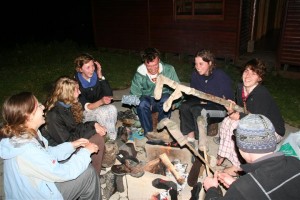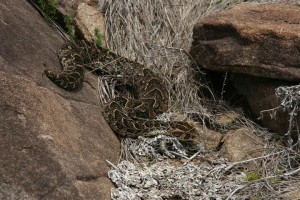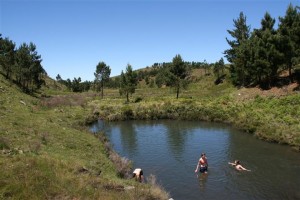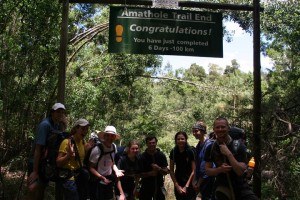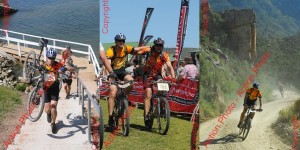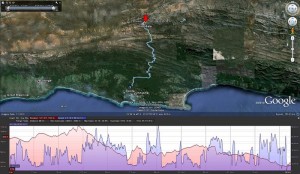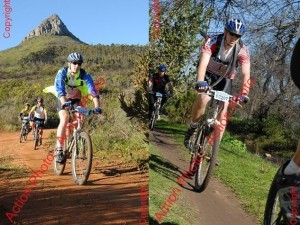I recently (Nov 2011) had the opportunity to hike the Amatola Hiking from King WIlliams Town to Hogsback. A group of five other engineers and two BSc graduates made for great company along the 100km we covered in 6 days.
Each day’s route leads from one hut to the next. Five huts in total provided us with a warm place to rest, a reasonably soft bed to sleep on, and somewhere to cook. The Amatola trail is rated as one of the toughest hikes in Southern Africa, and although I’m a fairly bad judge of such things, I am quite likely to accept other people’s opinions on these matters. It must be said that it is an extremely beautiful hike. Majority of your progress is made through natural forest which reveals the widest variety of fungus you’ll ever see along with splendid displays of waterfalls.
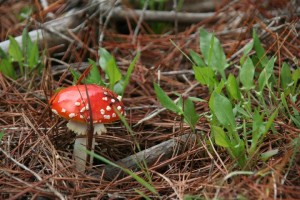 We drove up from Stellenbosch, spending the night in a backpackers in PE (Lily Pond Backpackers – good facilities, well priced), and then heading on to Hogsback to spend the night before the first day. Both the night before, and after the hike we spent at Away with the Fairies Backpackers in Hogsback, quite nice huts, although the geyser didn’t make it halfway through our group when we finished the hike. That being said we did have warm water in the morning again, and the rooms were well kept and clean.
We drove up from Stellenbosch, spending the night in a backpackers in PE (Lily Pond Backpackers – good facilities, well priced), and then heading on to Hogsback to spend the night before the first day. Both the night before, and after the hike we spent at Away with the Fairies Backpackers in Hogsback, quite nice huts, although the geyser didn’t make it halfway through our group when we finished the hike. That being said we did have warm water in the morning again, and the rooms were well kept and clean.
We caught a lift with a guy called Lawrence who picked the eight of us and our gear up at 6AM in Hogsback and dropped us at our starting point just outside of King William’s Town. After having driven up in pouring rain and going to sleep with thick fog, it was nice to wake up to some slightly overcast weather.
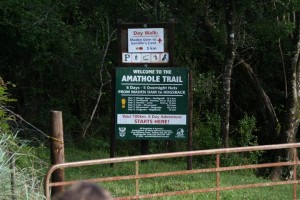 We carried a fairly nice map which displayed the various paths one can follow along with estimated times to complete. Day 1 was supposed to be about 16km, but we think we somehow managed a route less than 12km, as we did fairly amazing time to the first hut (Gwili-Gwili) arriving some time before 1PM.
We carried a fairly nice map which displayed the various paths one can follow along with estimated times to complete. Day 1 was supposed to be about 16km, but we think we somehow managed a route less than 12km, as we did fairly amazing time to the first hut (Gwili-Gwili) arriving some time before 1PM.
On arrival we were greeted by cleaners busy neatening the hut and a man tending to the fire of a hot water donkey. In the past it seems that some huts contained gas water heaters or other apparatus, but when we did the route each hut had a standard fire heated donkey. So day one ended fairly early and with nice warm showers for each of us.
The huts themselves were generally in fairly good order. All of them are built from wood, and generally hidden from view by the surrounding forest. Most had some form of outhouse and shower facility. Gwili-Gwili itself had a four showers and two long drop toilets and a lovely braai area under cover.
 Day 2 was overcast from start to finish. We opted for a slightly shorter route which skipped a waterfall. On arrival at Dontsa Hut, signs indicated that the waterfall was a mere 0.8km away, and so several of us went for a swim below the amazingly beautiful, and amazingly cold waterfall.
Day 2 was overcast from start to finish. We opted for a slightly shorter route which skipped a waterfall. On arrival at Dontsa Hut, signs indicated that the waterfall was a mere 0.8km away, and so several of us went for a swim below the amazingly beautiful, and amazingly cold waterfall.
Two flushing toilets were located about 200m from the hut, and a single shower linked to the donkey was available. The only problem was the wood provided was extremely wet, which resulted in fires that were difficult to maintain and only slightly not cold showers. This ended up being a repeating theme throughout the hike. Each hut had a large axe (often chained to the ground) and an ample supply of wood, but it was generally too damp to make any type of successful fire.
Day 3 lead us on to Cata hut. A fairly long, overcast day, uneventful for the most part. The last few kilometers are covered on a jeep track, which ends down in a valley where the hut is located. The hut is fenced in along with the other buildings, but the exact time line and planning involved in the building seemed to be absent from anyone involved’s knowledge. Again lukewarm water showers were had, and shortly after we arrived a drizzle set in.
Later that evening the rain started to pour down. And we had a spectacular thunderstorm with an amazing amount of rain, causing the water tanks to overflow. The huts and shelters provided lovely dry places to cook, eat and sleep.
Although you cross rivers quite a few times throughout the hike, up until this point I had managed to keep my socks dry, mainly due to my determination to jump over as many loose rocks as I needed, and aided by the slight water-resistant abilities my hiking boots possessed. But day 4 was a lot of walking through long grass, and within the first 5km my socks were soaked.
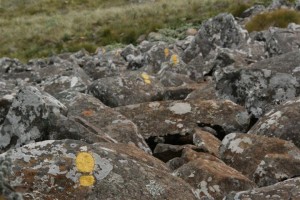 Throughout the hike the path is fairly well marked, a continuous strew of yellow footprints ensure that you know you’re on track, and, especially through the forests, the paths are fairly well worn. After the first few kilometres on Day 4, there is a split. A shortcut which heads straight up the mountain, or a longer, slightly flatter route which takes you up the slopes of a nearby hill. Apparently everyone takes the shortcut, as we got lost for what probably amounted to an hour over the next 5kms as we repeatedly lost the track. Even though it was further, and we lost the path several times, I was extremely glad we took that route, as it takes you past one of the highest points in the area, which allows you an amazing 280 degree view of the surrounding area and valleys.
Throughout the hike the path is fairly well marked, a continuous strew of yellow footprints ensure that you know you’re on track, and, especially through the forests, the paths are fairly well worn. After the first few kilometres on Day 4, there is a split. A shortcut which heads straight up the mountain, or a longer, slightly flatter route which takes you up the slopes of a nearby hill. Apparently everyone takes the shortcut, as we got lost for what probably amounted to an hour over the next 5kms as we repeatedly lost the track. Even though it was further, and we lost the path several times, I was extremely glad we took that route, as it takes you past one of the highest points in the area, which allows you an amazing 280 degree view of the surrounding area and valleys.
 The day ended at Nmyeni hut. While hiking you are constantly surrounded by the sounds of birds, but it is rare to ever see one, or so we found. On arrival at Nmyeni hut, we were greeted by our first proper sighting, that of a Knysna Lourie, it was short lived, but we managed a few photographs.
The day ended at Nmyeni hut. While hiking you are constantly surrounded by the sounds of birds, but it is rare to ever see one, or so we found. On arrival at Nmyeni hut, we were greeted by our first proper sighting, that of a Knysna Lourie, it was short lived, but we managed a few photographs.
The hut had a couple of windows that had been smashed out, glass was lying around and rubbish bins had litter strewn around them. The shower and toilet facilities weren’t that nice either, and for once we decided to give trying to make a fire for the donkey a complete skip, and we all bathed in a nearby stream.
The next day we woke up to beautiful sunshine. The first 4 days had provided little sunshine, mainly being overcast, if not drizzling. Day 5 held a few lovely swimming spots, and it was the first time anyone had really wanted to jump into the rivers. The sun also brought about our first encounter of a snake. A beautiful fat Puff Adder which lay in the middle of the path. Myself and one of the guys before me both stepped right over the snake without noticing him, before the person behind me spotted the snake and made a well calculated detour.
We stopped and took a few photos, but he seemed fairly rustig, although the two of us who stepped over him were quite fortunate not to have upset him too badly.
Another swim, and an extremely steep descent into the forest ended us at our last hut (Zingcuka). It was very nicely laid out, with two showers and a long drop a slight way off. The hut itself was beautifully located and a nice braai area was also provided.
Instead of trying to achieve anything with the provided wood, we went hunting and took down a few dead trees which we chopped up for the fire. The fire provided us with lovely warm water for our final night. A bottle of sherry that two of the girls had carried the previous five days also did not go amiss.
The last day was also to be one of the longer ones, and once arriving at the end of the hike, still required a 4km walk back to town. We had been getting up between 6 and 7AM the previous days, and generally leaving about 7:30, but we decided for the last day to get up at 5, and ended up leaving at 6:10.
Day 6 has a section of about 8km without water, which was fairly tough in the warm conditions that we did it in, but when we eventually stopped for lunch at a waterfall with a spectacular view at the 13km mark, it was most welcome.
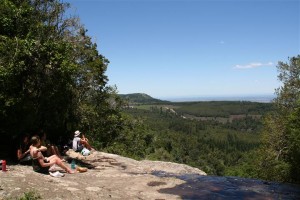 From there it was a fairly short hour to the end point! Once we’d taken some photos we headed off down the road back to Hogsback. About 700m later a truck came passed, and with eight thumbs sticking out, we successfully managed a grateful lift back to Hogsback where our first stop resulted in beers and ice-cream all round.
From there it was a fairly short hour to the end point! Once we’d taken some photos we headed off down the road back to Hogsback. About 700m later a truck came passed, and with eight thumbs sticking out, we successfully managed a grateful lift back to Hogsback where our first stop resulted in beers and ice-cream all round.
We ended up back in Hogsback some time shortly after 13:00, which was a nice reward for the early start. After everyone had showered and had a bit of a snooze we all went out on the town to a lovely little pub/restaurant/hotel known as the Hogsback Inn. They provided great meals, delicious food and at a very reasonable cost, would definitely recommend giving them a visit.
The hike is managed by the Department of Water Affairs in King Williams Town, contact details can be found here (Eastern Cape office). The cost is generally R750pp for permits and a map for the 6 day route. Students apparently hike for free, which was great news for us. For more information on the hike have a look here, here and here (fairly old post).



